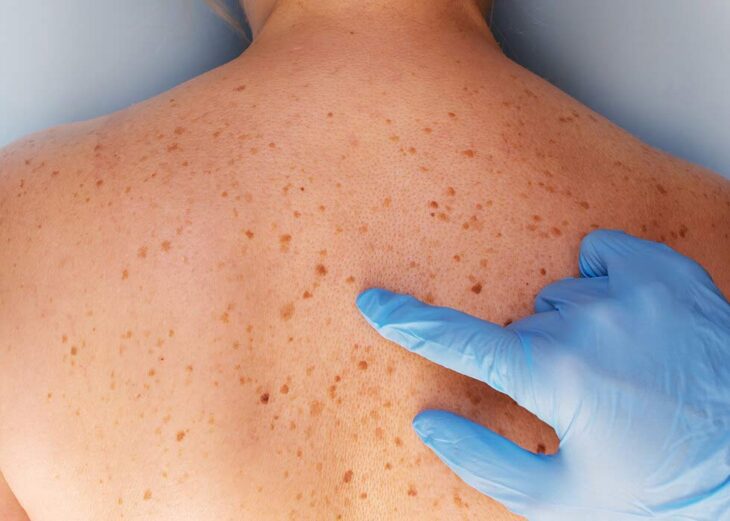
Dermatology Clinic
Moles are small and pigmented spots on the skin that come in different shapes and sizes. While moles come in a variety of shapes, color, and sizes, they can also be flat on the skin, or raised above it. Moreover, there are also many different types of moles that people can have, which are classified in three types. These are congenital, acquired and atypical.
Simply described, congenital moles are those that are present at birth, acquired moles are those that develop after birth, while atypical moles – also called dysplastic nevi – have irregular borders, are asymmetrical, and usually have multiple colors.
Moles are usually determined due to one’s genetics, but they can also form from too much sun exposure and even using tanning salons. While some moles grow over time, others can change, sometimes due to puberty or even pregnancy in women. But they can also become melanoma, or cancer of the skin, which is why you need to be conscious of your moles and if they change in size, texture and color.
Malignant melanoma, or skin cancer, is a serious form of skin cancer that starts in the melanocytes, or the skin cells found in the upper layer of skin. There is also basal cell carcinoma (BCC) and squamous cell carcinoma (SCC), which are less common but more dangerous due to the fact that it can spread towards other organs if left untreated.
When it comes to moles though, experts explain that it’s actually quite rare for malignant melanoma to form in moles. In fact, according to Skin Cancer Foundation, “Only 20-30% of melanomas are found in existing moles. While 70-80% arise on normal-looking skin.” This is why doctors warn their patients to watch out for any changes, new spots, or distinct marks on the skin that look different from others.
Here are 12 ways to recognize if a mole could be cancerous.
Tip 1: Count Them
According to the American Academy of Dermatology, National Cancer Institute, and many other medical organizations, people that have at least fifty moles or more are considered at a higher risk of developing melanoma. This is why it’s important to be aware of your moles, how many you have, and if they have undergone changes in color, size and texture, especially as you get older. Be sure to look out for any suspicious looking moles, especially those that have changed over time. And if you happen to have at least fifty or more, it would be a good idea to have a mole check with a dermatologist at least once a year.





